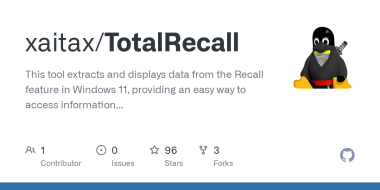xaitax/TotalRecall: This tool extracts and displays data from the Recall feature in Windows 11, providing an easy way to access information about your PC's activity snapshots.
this rootless Python script rips Windows Recall’s screenshots and SQLite database of OCRed text and allows you to search them.
